4/28/2025 OLAW News: Dr. Brent Morse has Retired from OLAW + Upcoming OLAW Webinar + AAALAC Position Statements on 3Rs and Veterinary Care + External Events
04/08/2025 OLAW News: External Events
In this issue:
- The AWIC Workshop- Meeting the Requirements of the Animal Welfare Act to be held on April 9-10, 2025, is cancelled
- Biosafety Administrators Association (BSAA) Upcoming Virtual Events
- SCAW Training Workshop – Registration Closes Soon!
- IACUC Administrators Association (IAA) Upcoming Events
_______________________________________
The AWIC Workshop- Meeting the Requirements of the Animal Welfare Act to be held on April 9-10, 2025, is cancelled
Check the AWIC Workshop webpage for any updates regarding future workshops and events.
In the meantime, feel free to take their on-demand and self-paced training that covers similar topics to this live Workshop. Access this training by clicking the button below and navigating to the “On Demand Workshop” link on the right.
03/24/2025 OLAW News: External Events
In this issue:
- IACUC 101 Plus Virtual Workshop – Register Now!
- AWIC Updates and Workshops- Meeting the Requirements of the Animal Welfare Act
- SCAW Training Workshop – Registration Closes Soon!
- IACUC Administrators Association (IAA) Upcoming Webinar
- The 3Rs Certificate Course From the 3Rs Collaborative is Now Available
_______________________________________
IACUC 101 Plus Virtual Workshop – Register Now!
April 1-2, 2025 | Virtual
03/12/2025 OLAW News: Updated Format for Semiannual Checklist + External Events
In this issue:
- Outline Format Option for Semiannual Checklist
- National Academies of Science, Engineering, and Medicine (NASEM) Webinar on the Avian Flu Response
- IACUC 101 Plus Virtual Workshop – Save the Date!
- AWIC Workshops- Meeting the Requirements of the Animal Welfare Act
- SCAW Training Workshop
- The 3Rs Collaborative & IQ MPS Webinar Series
________________________________________
01/21/2025 OLAW News: OLAW Webinar + External Events
In this issue:
- Registration for the January OLAW Webinar is OPEN! Mastering Mentorships
- IACUC Administrators Association (IAA) Upcoming Virtual Events
- Biosafety Administrators Association (BSAA) Upcoming Virtual Events
- SCAW Training Workshop- Save the Date!
________________________________________
Registration for the January OLAW Webinar is OPEN! Mastering Mentorships
January 23, 2025 | 2:30 PM –3:30 PM | Virtual
Join us in this webinar to discuss elements of an effective mentorship program, including hands-on training and addressing the gap between didactic modules and practical skills training. Participants will learn strategies for developing a strong training program for all personnel— including IACUC members, IACUC administrators and staff, trainers, veterinarians, IACUC/IACUC administration, PAM, and research staff.
OLAW Closed Due to the Lapse in Federal Government Funding
Due to the absence of either a fiscal year 2026 appropriation or Continuing Resolution for the Department of Health and Human Services, OLAW is now closed. We are providing the following information to answer questions you may have on the impact such a lapse in funding has on your Animal Welfare Assurance and the availability of OLAW systems and services.
The following activities will be impacted until appropriations are enacted:
Disaster Preparedness and Response
Disaster Preparedness and Response
Disaster Preparedness and Response
The following resources are provided to assist animal care and use programs in preparing for and coping with disasters and emergencies while maintaining animal welfare.
A note on terminology: Several definitions of "disaster" exist, including legal definitions and those from nongovernmental entities. This page primarily uses the term “disaster” as found in the Guide for the Care and Use of Laboratory Animals (Guide p.35), but the principles provided may be equally applicable to many types of emergencies.
On this page:
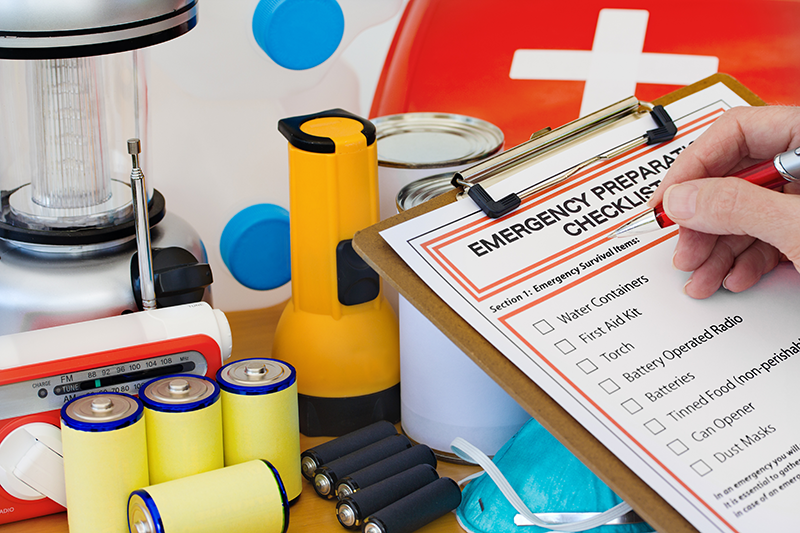
What is a Disaster?
Disasters are “unexpected conditions that result in the catastrophic failure of critical systems or significant personnel absenteeism, or other unexpected events that severely compromise ongoing animal care and well-being" (Guide p.35).
It can be helpful to think of disasters or emergencies in general categories:
- Natural Disasters: Hazardous events occurring due to environmental factors, such as floods, hurricanes, tornadoes, heat waves, etc.
- Accidents: Unexpected, unintentional events that result in negative consequences, such as equipment failure, release of hazardous material, human error, etc.
- Malicious Events: Deliberate actions of ill intent designed to cause harm or damage, such as vandalism and sabotage, cyberattacks, terrorism, etc.
- Biological Events: Hazardous events occurring due to biological factors, such as pandemics, facility disease outbreaks, large-scale pest or mold infestation, etc.
Some disasters, such as weather events, can be anticipated to some degree. Others may occur with little warning. Disasters or emergencies may also vary in scale and result in localized or more extensive effects; for example, one storm may produce limited flooding or HVAC failure in a single vivarium building, while another may result in a large tornado that produces widespread damage. A disaster or emergency need not be extensive to have a significant impact on the welfare of animals and the research program. Having a well-designed disaster plan that addresses multiple types of disasters can help minimize potential impacts to life, property, and program operations.
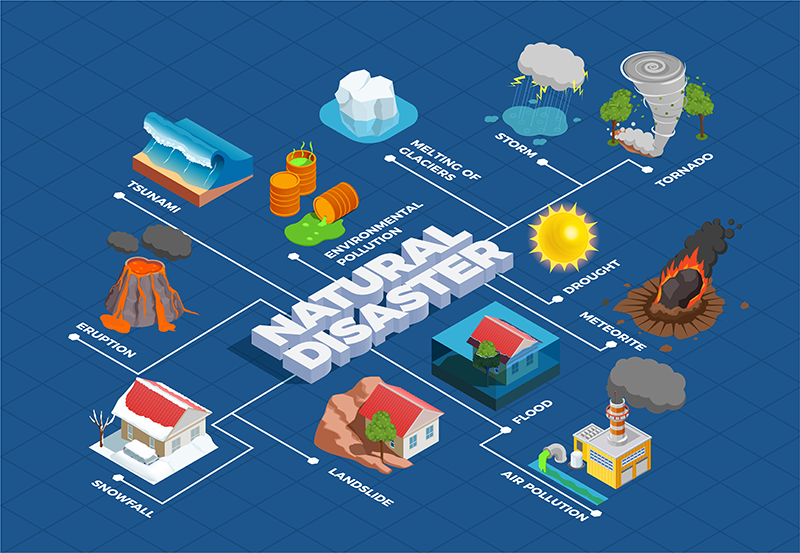
Quick References
OLAW provides external resources as a courtesy and any questions regarding the content should be addressed to the respective authors. The information in external articles does not necessarily represent the views of the NIH.
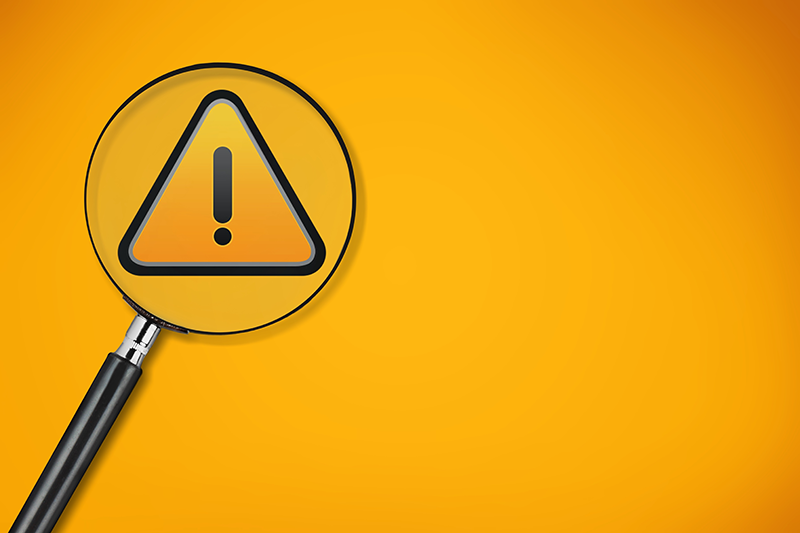
In Case of Emergency
- For questions regarding PROJECT FUNDING and GRANT ADMINISTRATION, contact the NIH Office of Extramural Research. View frequently asked questions, updated notices, and situation-specific NIH actions on the NIH Extramural Response to Natural Disasters and Other Emergencies webpage. OLAW is not a funding authority.
- For questions regarding ANIMAL WELFARE, PROGRAM MANAGEMENT, IACUC FUNCTION, and REPORTING contact OLAW by phone at 301-496-7163 or by email at [email protected]. Note that assistance is available only during business hours and therefore messages may not receive an immediate response.
- For questions regarding EMERGENCY RESPONSE and RECOVERY, contact appropriate local, state, and federal emergency response authorities.
- For MEDIA INQUIRIES, visit the NIH Grants and Funding Information for Media and the Public webpage for contact information.
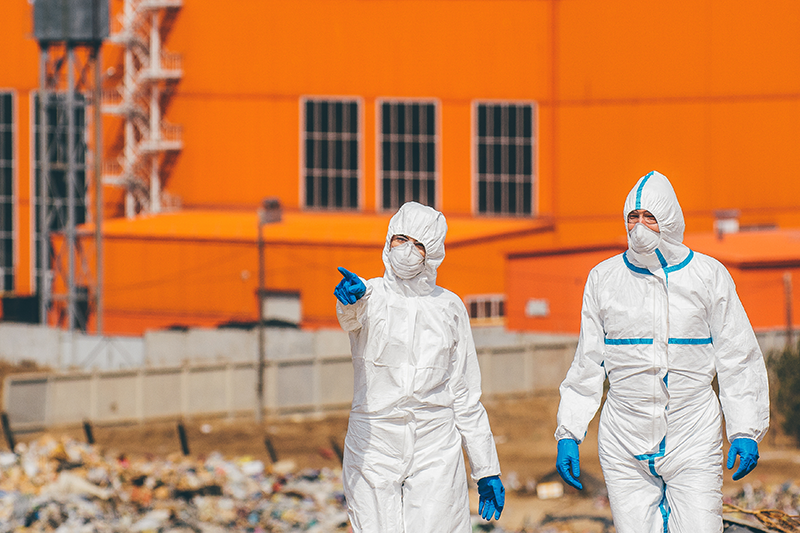
Useful Links
- NIH Extramural Response to Natural Disasters and Other Emergencies
- CDC Emergency Preparedness and Response
- Critical Infrastructure Protection Resources, U.S. Department of Health and Human Services (DHHS)
- Federal Emergency Management Agency (FEMA)
- Healthcare and Public Health Cybersecurity Resources, U.S. Cybersecurity and Infrastructure Security Agency (CISA)
- NIOSH Conserving Supplies of Personal Protective Equipment in Healthcare Facilities during Shortages
- NIOSH Emergency Response Resources
- OSHA Emergency Preparedness and Response
- USDA Disaster Planning with Animals

Example Disaster Plans
These documents are provided for educational value and not as specific recommendations or regulatory requirements.
- NIH IC Animal Program Disaster Plan Template: Developed by the NIH Office of Animal Care and Use (OACU), this document provides a comprehensive example disaster plan.
- NIH Division of Veterinary Resources Continuity of Services Plan: Developed by the NIH Division of Veterinary Resources, this document lists practical steps to be taken in the event of significant staff reduction to ensure the continuity of critical operations.
- NIH Pandemic Flu Readiness Plan for Research Animals: This document provides a brief summary of key preparedness topics for pandemic illness.
- AALAS Resources on Disaster Preparedness: This site contains a collection of institutional disaster plans and additional IACUC resources.
- FEMA Emergency Planning Guides: This page is a comprehensive resource providing examples and expert guidance on broadly applicable emergency planning principles, including designing effective disaster plans, preparing for and responding to specific risks, forming effective community partnerships, and disaster recovery.

Helpful References
- AVMA Guidelines for the Euthanasia of Animals
- AVMA Guidelines for the Depopulation of Animals
- Emergency Services Sector Cybersecurity Best Practices, U.S. Cybersecurity and Infrastructure Security Agency (CISA)
- NFPA 150: Fire and Life Safety in Animal Housing Facilities Code, National Fire Protection Association (NFPA)
- Pandemic Influenza Preparedness and Response: A WHO Guidance Document. Geneva: World Health Organization; 2009.
- Strengthening the Disaster Resilience of the Academic Biomedical Research Community: Protecting the Nation’s Investment. National Academies Press, 2017.
Laws, Policies, and Guidance
Laws and Policies
PHS Policy IV.A.1. “The PHS requires institutions to use the Guide for the Care and Use of Laboratory Animals (Guide) as a basis for developing and implementing an institutional program for activities involving animals."
- The Guideaddresses disaster planning and management in several sections. Some relevant pages include (but are not limited to) pages 35, 74, 75, 112, and 114.
PHS Policy IV.B.3. Footnote 8."The IACUC may, at its discretion, determine the best means of conducting an evaluation of the institution's programs and facilities. The IACUC may invite ad hoc consultants to assist in conducting the evaluation. However, the IACUC remains responsible for the evaluation and report."
PHS Policy IV.C.1.g."Methods of euthanasia used will be consistent with the recommendations of the American Veterinary Medical Association (AVMA) Panel on Euthanasia, unless a deviation is justified for scientific reasons in writing by the investigator."
PHS Policy IV.C.5."The IACUC shall conduct continuing review of each previously approved, ongoing activity covered by this Policy at appropriate intervals as determined by the IACUC, including a complete review in accordance with IV.C.1-4. at least once every three years."

PHS Policy V.A.5. “OLAW is responsible for the general administration and coordination of this Policy and will...have the authority to review and approve or disapprove waivers to this Policy."
PHS Policy V.D. "Institutions may request a waiver of a provision or provisions of this Policy by submitting a request to OLAW. No waiver will be granted unless sufficient justification is provided and the waiver is approved in writing by OLAW."
Guidance
| NOT-OD-24-076 | Guidance on Flexibilities for Conducting Semiannual Program Review | March 22, 2024 |
| NOT-OD-24-075 | Guidance on Flexibilities for Conducting Semiannual Inspections of Animal Facilities | March 22, 2024 |
| NOT-OD-23-171 | Reminder: NIH Natural Disaster Policies (NIH Division of Grants Policy Guide Notice) | September 7, 2023 |
| NOT-OD-15-109 | Guidance on Qualifications of IACUC Nonscientific and Nonaffiliated Members | June 9, 2015 |
| NOT-OD-14-126 | Guidance on Significant Changes to Animal Activities | August 26, 2014 |
| NOT-OD-11-053 | Guidance to Reduce Regulatory Burden for IACUC Administration Regarding Alternate Members and Approval Dates | March 18, 2011 |
| NOT-OD-09-035 | Guidance to IACUCs Regarding Use of Designated Member Review (DMR) for Animal Study Proposal Review Subsequent to Full Committee Review (FCR) | January 8, 2009 |
| NOT-OD-06-052 | Guidance on Use of Telecommunications for IACUC Meetings under the PHS Policy on Humane Care and Use of Laboratory Animals | March 24, 2006 |
Emergency Management
The PHS Policy, through application of the Guide for the Care and Use of Laboratory Animals (Guide), requires facilities to maintain a robust disaster plan. Disaster plans that consider all aspects of emergency management are the most effective.
Emergency management professionals approach disaster preparedness and response with the "Four Phases of Emergency Management" framework:
-
Mitigation: Regular activities involving safety and good business practice that reduce the likelihood of emergencies or lessen the impact of a disaster or emergency. Examples of mitigation include performing regular facility maintenance, operating an occupational health and safety program, providing personnel training, enabling routine data backup, insurance policies, etc.
In some instances, effective mitigation strategies can prevent emergencies from arising altogether. Institutions, supervisors, and researchers should evaluate risk on an ongoing basis to ensure that mitigation strategies are comprehensive and appropriate.
-
Preparedness: Specific protocols and actions in anticipation of an emergency to facilitate timely and effective response. Examples of preparedness include developing evacuation plans and emergency response SOPs, establishing lines of authority and communication, ensuring adequate supplies, preserving key genetic lines, instituting drills and tabletop exercises, etc. Emergency management authorities encourage the use of an "all-hazards approach" to disaster and emergency preparedness, which focuses on ensuring the continuity of critical systems and core functions to ensure resilience in a variety of circumstances.
It can also be helpful for institutions to become acquainted with the principles of incident command and response, as well as local and national emergency response guidelines, in advance of an emergency to be the most informed while designing the disaster plan.
- Response: Actions taken during and in the immediate aftermath of an emergency to ensure the safety of personnel and animals, save property, and minimize further impact. Examples of disaster response include emergency medical care, search and rescue, providing supplemental power, etc.
- Recovery: Long-term actions taken to re-establish the program. Examples of long-term response include facility repairs, replacement of lost property, securing financial assistance, ensuring the psychological well-being of staff, etc. As part of recovery, disaster plans should be reviewed and updated with “lessons learned.”
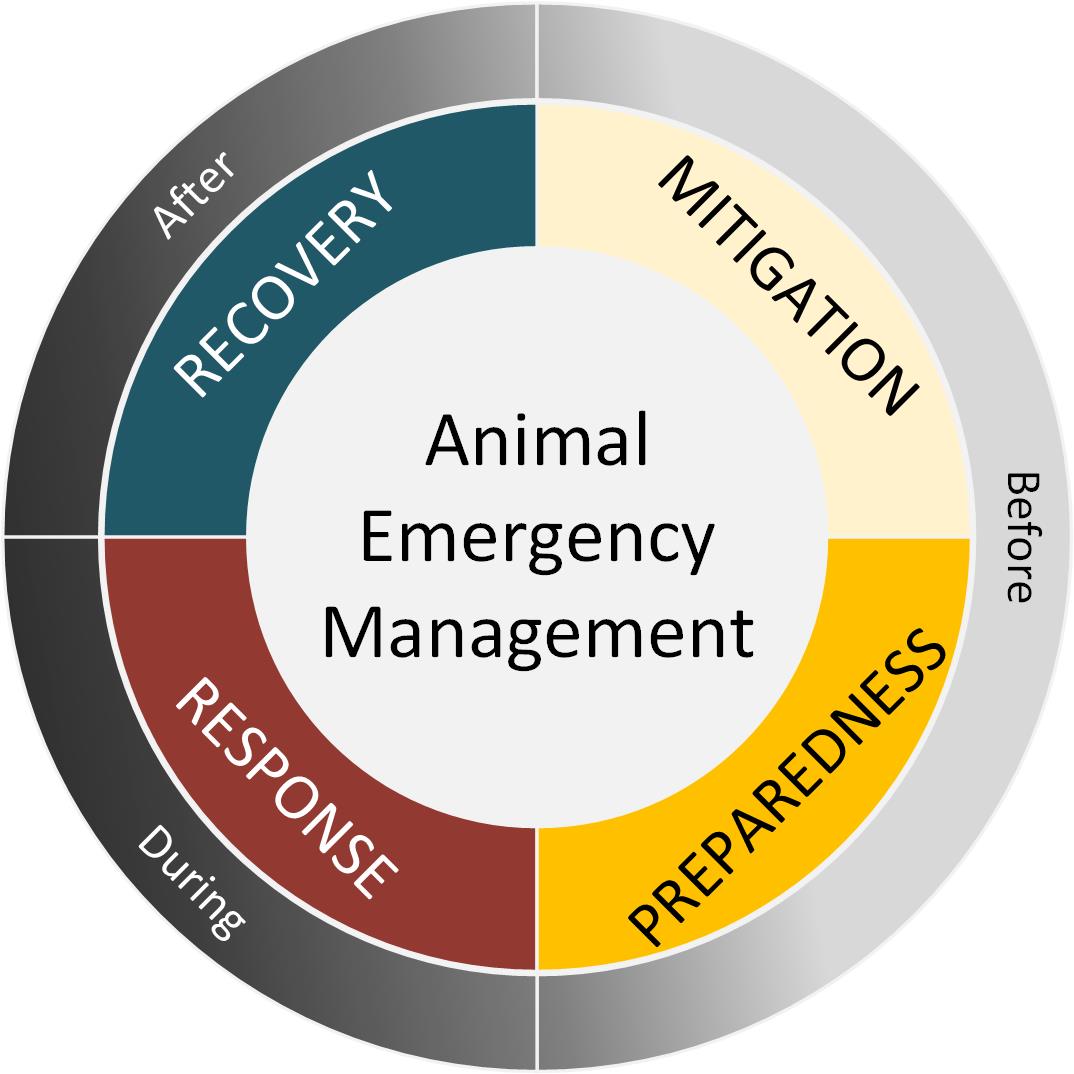
The Four Phases of Emergency Management framework is applicable to all types of disasters or emergencies and can be thought of as a cycle.
It is important to note that while cyclic on a per-incident basis, the phases of emergency management are not exclusive on a broader scale. For example, core mitigation actions may be appropriate at all stages of disaster preparedness and response, and institutions responding to or recovering from one emergency may continue to bolster preparedness in other areas. In addition, institutions should strive for continuous assessment, review, and improvement of their disaster plans to ensure that they are able to appropriately respond to new and emerging threats.
For additional information on the principles of emergency management, see the following resources:
- Animals in Disasters: The Four Phases of Emergency Management, FEMA training materials
- Current Best Practices in Emergency Management, NASAAEP Working Group documents
- Developing and Maintaining Emergency Operations Plans: Comprehensive Preparedness Guide 101, FEMA training materials
- National Incident Management System (NIMS), FEMA training resources
Disaster and Emergency Reporting
Reporting to OLAW
NOT-OD-05-034 references animal welfare impacts resulting from natural disasters, accidents, mechanical failures, etc. as examples of reportable incidents. Prompt reporting of any serious or continuing noncompliance, any serious deviation from the provisions of the Guide, or any suspension of an activity by the IACUC is a requirement of the PHS Policy (IV.F.) However, OLAW recognizes that attention to personnel and animals takes precedence in emergency situations. While Institutions should report issues promptly, human and animal safety and wellbeing should be the first priority.
Follow-up reports providing the schedule and plan for return to compliance and full function should also be provided in a timely manner. Open communication allows OLAW to better understand stakeholder needs and work with institutions as they navigate difficult circumstances.
Reporting to Funding Bodies
Per the NIH Grants Policy Statement: “…notification shall be given in the case of problems, delays, or adverse conditions which materially impair the ability to meet the objectives of the award" (NIH GPS 8.1.). Institutions should seek guidance from funding administration and keep abreast of announcements on the NIH Extramural Response to Natural Disasters and Other Emergencies page for information relating to NIH funding.
Resources

FAQs
Webinars
| Disaster Preparedness and Response Webinar |
September 26, 2024 |
| COVID-19 Pandemic Response Resources and FAQs for Animal Care and Use Programs |
April 8, 2020 |
| Pandemic Contingency Planning and Its Impact on Animal Care |
March 19, 2020 |
| Building a Research Occupational Health Program |
March 12, 2020 |
| Application of the AVMA Guidelines for the Depopulation of Animals to Biomedical Research |
September 26, 2019 |
| Disaster Planning |
March 7, 2013 |
| Physical Plant Issues |
March 11, 2010 |
| Emerging Issues, USDA Perspective |
September 17, 2009 |
| Preparing for Animal Rights Extremist Activities at Your Institution |
June 12, 2008 |

Articles
See the Institutional Responsibilities Topic Index entries under "Disaster Plans and Emergencies" and "Pandemic (COVID-19)" for articles by OLAW staff and additional resources.
Disaster planning and management [Special Issue]. (2010) ILAR Journal, 51(2). *Multiple Articles
Durkee, S. (2007) Disaster planning. Animal Lab News, 6(3):21–24.
Focus on disaster preparedness [Special Section]. (2013) Lab Animal, 42(10), F1-F27. *Multiple Articles
Mohan, S., Hampton, Lori L., Silk, S. B., (2017) Adverse events at research facilities. Lab Animal 46(6), 244-249
Petervary, N., Pritchard, C., Esparza-Trujillo, J. A., & Gopee, N. (2020) Veterinary staffing shortages and potential solutions during the COVID-19 pandemic. Laboratory Animal Science Professional, November 2020, 24–26.
Pritchard, C., Petervary, N., & Gopee, N. (2020) Maintaining compliance in unprecedented times: flexibilities for compliance with the PHS Policy during the COVID-19 pandemic. Laboratory Animal Science Professional, July 2020, 48–50.
Cephalopods in Research
Cephalopods in Research
Cephalopods in Research
The use of cephalopods in research is a growing field, and the following resources are provided to assist institutions in maintaining good animal welfare when working with these species.
On this page:
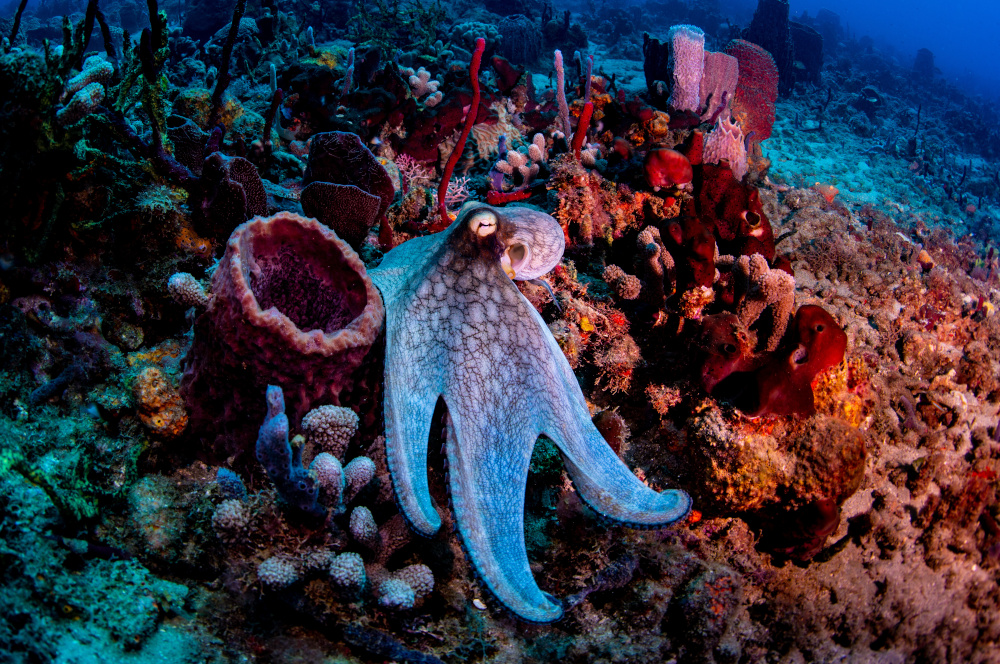
Request for Information
OLAW requested input on proposed guidance for use of cephalopods in research, research training, experimentation, or biological testing or for related purposes between September 8, 2023 and December 22, 2023.
The proposed text can be found here: NOT-OD-23-176
The comment period is now closed.
The final text will be published once comments have been considered.
What are Cephalopods?
Cephalopods are a class of invertebrate aquatic animals that includes octopuses, nautiluses, squid, and cuttlefish. These animals belong to the phylum Mollusca, which includes several other invertebrate species such as bivalves and snails. Distinguishing features of cephalopods include a head-like structure, arms and/or tentacles, and a hard beak structure. There are over 800 known species of cephalopods worldwide.
Cephalopods in Research
Cephalopod research has been conducted for over 100 years. These studies have provided valuable insight into the science of learning, motion and movement, behavior, and nervous system development. Recent initiatives to formalize standards for cephalopod care and use are helping to ensure continued humane treatment and honor the principles of the 3Rs: Replacement, Reduction, and Refinement.
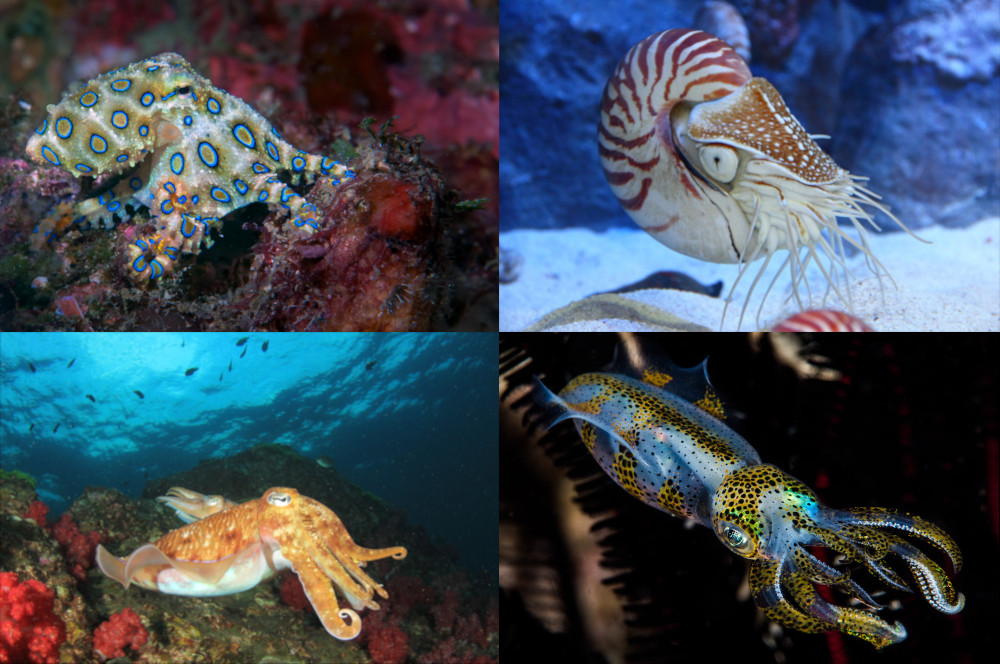
Quick References
OLAW provides these resources as a courtesy and any questions regarding the content should be addressed to the authors. OLAW is providing them for informational value and not as regulatory guidance. The information in each article does not necessarily represent the views of the NIH.
Please email suggested resources to the Division of Policy and Education. Commercial entities are not eligible for listing.
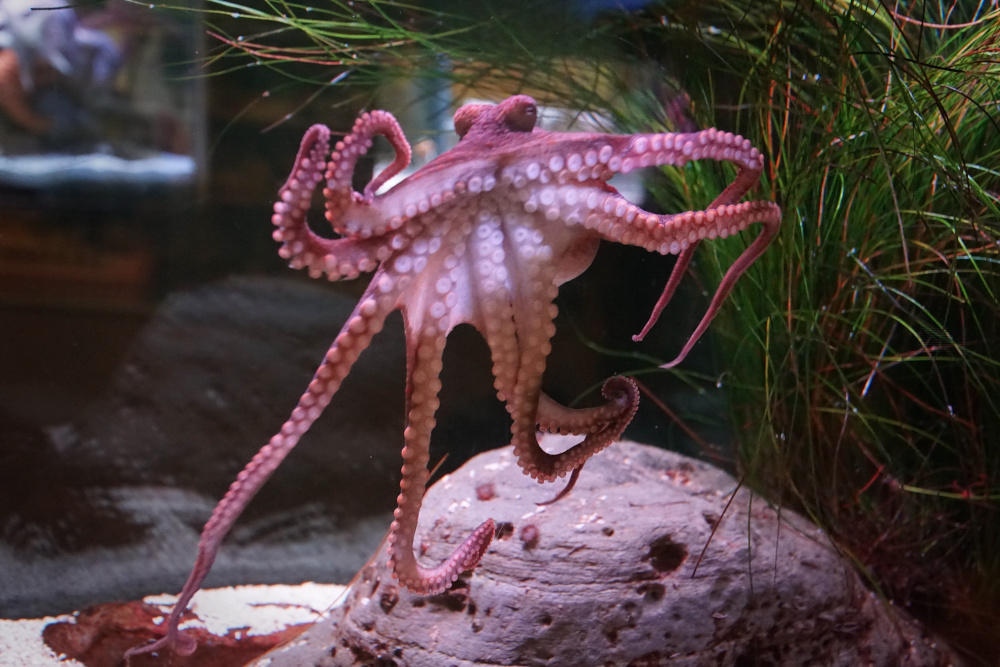
Useful External Guidelines
The following list provides a limited collection of guidelines for the care and use of cephalopods authored by various institutions and professional associations worldwide. While not considered official guidance for Assured Institutions by OLAW, the information presented in these references may be useful in designing high-quality programs that ensure good animal welfare.
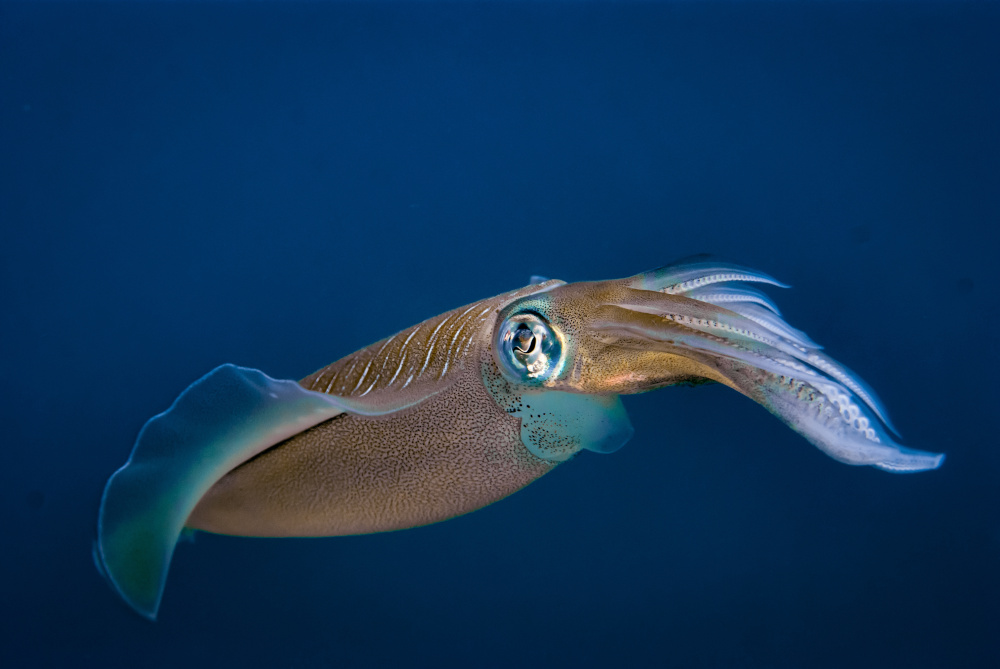
Databases and Organizations
The following additional links provide the names of databases and professional organizations that promote responsible use of cephalopods in research:
- NORECOPA: Cephalopods in research database
- CephsInAction
- Association for Cephalopod Research "CephRes" (Training materials available under "training resources")
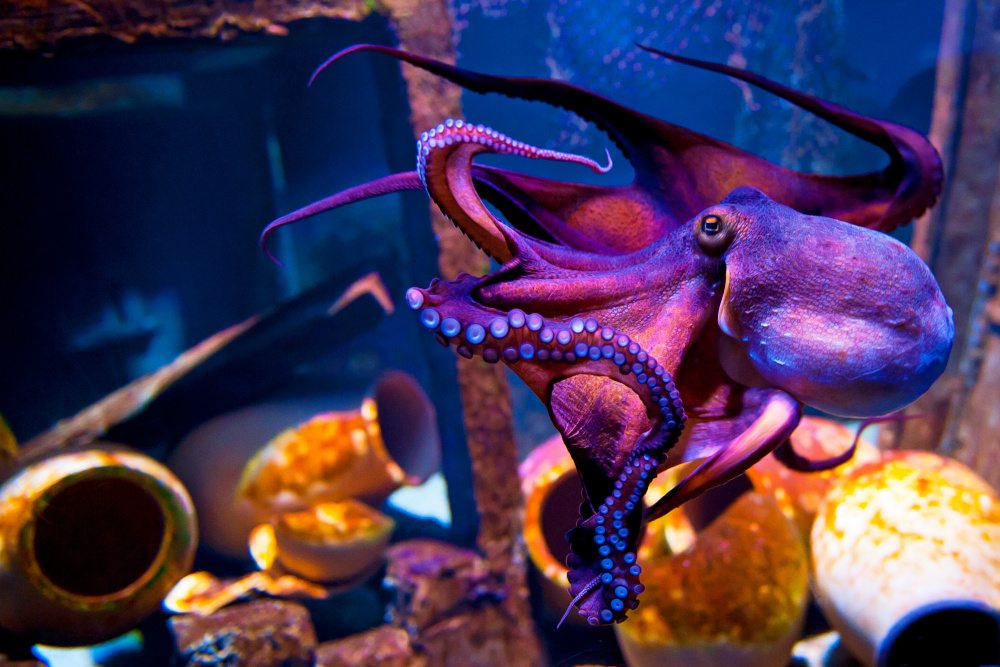
Compliance Unit Standard Procedure (CUSP) Sharing Site
The Compliance Unit Standard Procedure (CUSP) Sharing Site is an online repository where participating institutions can share standard procedures used in animal care protocols, supporting the development of high-quality protocols, while reducing burden for researchers, IACUCs, and IACUC support staff. The goal is to assist institutions to easily build a library of standard procedures to use for multiple purposes, such as variations on commonly used techniques, practical information for non-typical species, and methodology used in wildlife studies. Access will initially be limited to FDP (Federal Demonstration Partnership) member institutions (includes ~200 institutions), but the site will ultimately be available to all institutions.
Laws, Policies, and Guidance
Laws and Policies
Though cephalopods are not covered under the PHS Policy on Humane Care and Use of Laboratory Animals (PHS Policy), institutions are expected to adhere to the U.S. Government Principles for the Utilization and Care of Vertebrate Animals Used in Testing, Research, and Training for humane care and use of all animals in their care. In addition, because cephalopods are not vertebrate animals, they are not currently subject to the requirements for reporting and there is no requirement to submit a Vertebrate Animals Section for cephalopod use in funding applications.
Guidance
| NOT-OD-23-176 | Request for Information (RFI) on Proposed Guidance to Assured Institutions on Cephalopod Care and Use | September 7, 2023 |
| NOT-OD-23-057 | NIH Encourages the Use of the ARRIVE Essential 10 Checklist in all Publications Reporting on the Results of Vertebrate Animal and Cephalopod Research | February 10, 2023 |

Pain Perception, Neurobiology, Cognition, and Learning
OLAW provides these articles as a courtesy and any questions regarding the content should be addressed to the authors. OLAW is providing them for informational value and not as regulatory guidance. The information in each article does not necessarily represent the views of the National Institutes of Health (NIH).
Please email suggested resources to the Division of Policy and Education.
- Burrell, Brian D. 2017. “Comparative Biology of Pain: What Invertebrates Can Tell Us about How Nociception Works.” Journal of Neurophysiology 117 (4): 1461–73.
- Crook, Robyn J. et al. 2013. “Squid Have Nociceptors That Display Widespread Long-Term Sensitization and Spontaneous Activity after Bodily Injury.” Journal of Neuroscience 33 (24): 10021–26.
- Hague, Theresa et al. 2013. “Preliminary in Vitro Functional Evidence for Reflex Responses to Noxious Stimuli in the Arms of Octopus Vulgaris.” J. Exp. Mar. Bio. Ecol. 447: 100–105.
- Walters, Edgar T. 2018. “Nociceptive Biology of Molluscs and Arthropods: Evolutionary Clues about Functions and Mechanisms Potentially Related to Pain.” Frontiers in Physiology 9: 1049.
- Agin, Véronique, et al. 2006. "The “prawn-in-the-tube” procedure in the cuttlefish: Habituation or passive avoidance learning?" Learning & Memory 13(1): 97-101.
- Amodio, Piero et al. 2019. “Grow Smart and Die Young: Why Did Cephalopods Evolve Intelligence?” Trends in Ecology and Evolution 34 (1): 45–56.
- Bellanger, Cécile et al. 2003. “Changes in Cholinergic Enzyme Activities in the Cuttlefish Brain during Memory Formation.” Physiology and Behavior 79 (4–5): 749–56.
- Boal, J. G. et al. 2000. “Observational Learning Does Not Explain Improvement in Predation Tactics by Cuttlefish (Mollusca: Cephalopoda.” Behavioural Processes 52 (2–3): 141–53.
- Crook, Robyn J. et al. 2009. “Memory of Visual and Topographical Features Suggests Spatial Learning in Nautilus (Nautilus Pompilius L.).” Journal of Comparative Psychology 123 (3): 264–74.
- Darmaillacq, Anne-Sophie et al. 2004. “Rapid Taste Aversion Learning in Adult Cuttlefish, Sepia Officinalis.” Animal Behaviour 68 (6): 1291–98.
- Darmaillacq, Anne-Sophie et al. 2008. “Embryonic Visual Learning in the Cuttlefish, Sepia Officinalis.” Animal Behaviour 76 (1): 131–34.
- Dickel, Ludovic et al. 2001. “Increase of Learning Abilities and Maturation of the Vertical Lobe Complex during Postembryonic Development in the Cuttlefish, Sepia.” Developmental Psychobiology 39 (2): 92–98.
- Di Poi, Carole et al. 2013. “Effects of Perinatal Exposure to Waterborne Fluoxetine on Memory Processing in the Cuttlefish Sepia Officinalis” Aquatic Toxicology 132: 84–91.
- Di Poi, Carole et al. 2014. “Cryptic and Biochemical Responses of Young Cuttlefish Sepia Officinalis Exposed to Environmentally Relevant Concentrations of Fluoxetine.” Aquatic Toxicology 151: 36–45.
- Fiorito, Graziano et al. 1990. “Problem Solving Ability of Octopus Vulgaris Lamarck (Mollusca, Cephalopoda.” Behavioral and Neural Biology 53 (2): 217–30.
- Fiorito, Graziano And Raymond Chichery. 1995. “Lesions of the Vertical Lobe Impair Visual Discrimination Learning by Observation in Octopus Vulgaris.” Neuroscience Letters 192 (2): 117–20.
- Grasso, Frank W. And Jennifer A. Basil. 2009. “The Evolution of Flexible Behavioral Repertoires in Cephalopod Molluscs.” Brain, Behavior, and Evolution 74 (3): 231–45.
- Gutnick, Tamar et al. 2022. “Neuroecology: Forces That Shape the Octopus Brain.” Current Biology 32 (3): R131–35.
- Huang, Kuan-Ling And Chuan-Chin Chiao. 2013. “Can Cuttlefish Learn by Observing Others?” Animal Cognition 16 (3): 313–20.
- Huffard, Christine L. 2013. “Cephalopod Neurobiology: An Introduction for Biologists Working in Other Model Systems.” Invertebrate Neuroscience 13 (1): 11–18.
- Hvorecny, Lauren M. et al. 2007. “Octopuses (Octopus Bimaculoides) and Cuttlefishes (Sepia Pharaonis, S. Officinalis) Can Conditionally Discriminate.” Animal Cognition 10 (4): 449–59.
- Mather, Jennifer A. 2008. “Cephalopod Consciousness: Behavioural Evidence.” Consciousness and Cognition 17 (1): 37–48.
- Mather, Jennifer A. and Ludovic Dickel. 2017. “Cephalopod Complex Cognition.” Current Opinion in Behavioral Sciences 16: 131–37.
- Messenger, J.B. 1973. “Learning in the Cuttlefish, Sepia.” Animal Behaviour 21 (4): 801–26.
- Perez, Paul V. et al. 2017. “The Selective Serotonin Reuptake Inhibitor Fluoxetine Increases Spontaneous Afferent Firing, but Not Mechanonociceptive Sensitization, in Octopus.” Invertebrate Neuroscience 17 (4): 10.
- Shigeno, Shuichi et al. 2018. “Cephalopod Brains: An Overview of Current Knowledge to Facilitate Comparison with Vertebrates.” Frontiers in Physiology 9: 952.
- Shomrat, Tal et al. 2008. “The Octopus Vertical Lobe Modulates Short-Term Learning Rate and Uses LTP to Acquire Long-Term Memory.” Current Biology 18 (5): 337–42.
- Shomrat, Tal et al. 2010. “Serotonin Is a Facilitatory Neuromodulator of Synaptic Transmission and ‘Reinforces’ Long-Term Potentiation Induction in the Vertical Lobe of Octopus Vulgaris.” Neuroscience 169 (1): 52–64.
- Shomrat, Tal et al. 2015. “The Vertical Lobe of Cephalopods: An Attractive Brain Structure for Understanding the Evolution of Advanced Learning and Memory Systems.” Journal of Comparative Physiology 201 (9): 947–56.
- Wells, M.J. and J.Z. Young. 1966. “Lateral Interaction and Transfer in the Tactile Memory of the Octopus.” Journal of Experimental Biology 45 (3): 383–400.
- Wells, M.J. and J.Z. Young. 1969. “The Effect of Splitting Part of the Brain or Removal of the Median Inferior Frontal Lobe on Touch Learning in Octopus.” Journal of Experimental Biology 50 (2): 515–26.
- Wells, M.J. and J.Z. Young. 1970. “Single-Session Learning by Octopuses.” Journal of Experimental Biology 53 (3): 779–88.
- Wells, M.J. and J.Z. Young. 1972. “The Median Inferior Frontal Lobe and Touch Learning in the Octopus.” Journal of Experimental Biology 56 (2): 381–402.
- Wells, M.J. and J.Z. Young. 1975. “The Subfrontal Lobe and Touch Learning in the Octopus.” Brain Research 92 (1): 103–21.
- Yasumuro, Haruhiko, and Yuzuru Ikeda. 2018. “Environmental Enrichment Affects the Ontogeny of Learning, Memory, and Depth Perception of the Pharaoh Cuttlefish Sepia Pharaonis.” Zoology 128: 27–37.
- Alupay, Jean S. et al. 2014. “Arm Injury Produces Long-Term Behavioral and Neural Hypersensitivity in Octopus.” Neuroscience Letters 558: 137–42.
- Crook, Robyn J. 2021. “Behavioral and Neurophysiological Evidence Suggests Affective Pain Experience in Octopus.” iScience 24 (3): 102229.
- Crook, Robyn J., et al. 2011. “Peripheral Injury Induces Long-Term Sensitization of Defensive Responses to Visual and Tactile Stimuli in the Squid Loligo Pealeii, Lesueur 1821.” Journal of Experimental Biology 214 (19): 3173–85
- Crook, Robyn J. et al. 2014. “Nociceptive Sensitization Reduces Predation Risk.” Current Biology 24 (10): 1121–25.
- Messenger, J.B. 1971. “Two-Stage Recovery of a Response in Sepia.” Nature 232 (5307): 202–3.
Cephalopod Medicine and Welfare
OLAW provides these resources as a courtesy and any questions regarding the content should be addressed to the authors. OLAW is providing them for informational value and not as regulatory guidance. The information in each article does not necessarily represent the views of the NIH.
Please email suggested resources to the Division of Policy and Education.
- De Sio, Fabio et al. 2020. "E Pluribus Octo–building consensus on standards of care and experimentation in cephalopod research; a historical outlook." Frontiers in physiology 11: 645.
- Fiorito, Graziano et al. 2015. “Guidelines for the Care and Welfare of Cephalopods in Research–A Consensus Based on an Initiative by CephRes, FELASA and the Boyd Group.” Laboratory Animals 49 (2) Supplement: 1–90.
- National Research Council. 2011. “Spineless Wonders: Welfare and Use of Invertebrates in the Laboratory and Classroom.” ILAR Journal 52 (2): 121–220.
- Ponte, Giovanna et al. 2023. "General and species-specific recommendations for minimal requirements for the use of cephalopods in scientific research." Laboratory Animals 57.1: 26-39.
- Scimeca, Joseph M., Gregory J. Barord, and Gregory A. Lewbart. 2022. “Chapter 9: Cephalopods.”Invertebrate Medicine, 3rd Ed., edited by Gregory A. Lewbart, 177–202. Hoboken, NJ: Wiley-Blackwell.
- Crook, Robyn J. 2013. “The Welfare of Invertebrate Animals in Research: Can Science’s next Generation Improve Their Lot.” PostDoc Journal 1 (2): 9–20.
- Drinkwater, Eleanor, Elva JH Robinson, and Adam G. Hart. 2019. “Keeping Invertebrate Research Ethical in a Landscape of Shifting Public Opinion.” Methods in Ecology and Evolution 10 (8): 1265–73.
- Fiorito, Graziano et al. 2014. “Cephalopods in Neuroscience: Regulations, Research and the 3Rs.” Invertebrate Neuroscience 14: 13–36.
- Harvey-Clark, Chris. 2011. “IACUC Challenges in Invertebrate Research.” ILAR Jour 52 (2): 213–20.
- Moltschaniwskyj, N.A. et al. 2007. “Ethical and Welfare Considerations When Using Cephalopods as Experimental Animals.” Rev Fish Biol Fisheries 17: 455–76.
- Smith, Jane A. et al. 2013. "Cephalopod Research and EU Directive 2010/63/EU: Requirements, Impacts and Ethical Review." Journal of Experimental Marine Biology and Ecology 447: 31-45.
- Abbo, Lisa A. et al. 2021. “Anesthetic Efficacy of Magnesium Chloride and Ethyl Alcohol in Temperate Octopus and Cuttlefish Species.” JAALAS 60 (5): 556–67.
- Andrews, Paul L.R. et al. 2013. “The Identification and Management of Pain, Suffering and Distress in Cephalopods, Including Anaesthesia, Analgesia and Humane Killing.” J. Exp. Mar. Bio. Ecol. 447: 46-64.
- Butler-Struben, Hanna M. etal. 2018. “In Vivo Recording of Neural and Behavioral Correlates of Anesthesia Induction, Reversal, and Euthanasia in Cephalopod Molluscs.” Frontiers in Physiology 20 (109)
- Cooper, John E. 2011. “Anesthesia, Analgesia, and Euthanasia of Invertebrates.” ILAR Journal 52 (2): 196–204.
- Gleadall, Ian G. 2013. “The Effects of Prospective Anaesthetic Substances on Cephalopods: Summary of Original Data and a Brief Review of Studies over the Last Two Decades.” J. Exp. Mar. Bio. Ecol. 447: 23–30.
- Gonçalves, Rui A. et al. 2012. “The Use of Different Anaesthetics as Welfare Promoters during Short-Term Human Manipulation of European Cuttlefish (Sepia Officinalis) Juveniles.” Aquaculture 370: 130–35.
- Polese, Gianluca et al. 2014. “Dose-Dependent Effects of the Clinical Anesthetic Isoflurane on Octopus Vulgaris: A Contribution to Cephalopod Welfare.” Journal of Aquatic Animal Health 26 (4): 285–94.
- Winlow, William et al. 2018. “Sense and Insensibility–An Appraisal of the Effects of Clinical Anesthetics on Gastropod and Cephalopod Molluscs as a Step to Improved Welfare of Cephalopods.” Frontiers in Physiology 9 (1147).
- Chancellor, Stephanie, Lisa Abbo, Bret Grasse, Taylor Sakmar, Joel S. Brown, David Scheel, and Rachel M. Santymire. 2021. “Determining the Effectiveness of Using Dermal Swabs to Evaluate the Stress Physiology of Laboratory Cephalopods: A Preliminary Investigation.” General and Comparative Endocrinology 314:113903
- Gore, S.R. et al. 2005. “Enrofloxacin Pharmacokinetics in the European Cuttlefish, Sepia Officinalis, after a Single Iv Injection and Bath Administration.” J. Vet. Pharmacol. Ther. 28 (5): 433–39.
- Holst, Meghan M., and Tim Miller-Morgan. 2021. “The Use of a Species-Specific Health and Welfare Assessment Tool for the Giant Pacific Octopus, Enteroctopus Dofleini.” JAAWS 24 (3): 272–91.
- Jerez-Cepa I. and Ignacio Ruiz-Jarabo. 2021. “Physiology: An Important Tool to Assess the Welfare of Aquatic Animals.” Biology 10 (1): 61.
- Lopes, Vanessa M. et al. 2017. “Cephalopod Biology and Care, a COST FA1301 (CephsInAction) Training School: Anaesthesia and Scientific Procedures.” Invertebrate Neuro 17 (3): 8.
- Narshi, Tanya M. et al. 2022. “Welfare Assessment of Invertebrates: Adapting the Animal Welfare Assessment Grid (AWAG) for Zoo Decapods and Cephalopods.” Animals 12 (13): 1675.
- Petrić, Mirela et al. 2018. "Procedure of hemolymph sampling in Octopus vulgaris." 3rd Congress of Croatian Laboratory Animal Science Association (CroLASA) and 2nd joint Congress of CroLASA and Society for Laboratory Animals of Slovenia (SLAS) with international participation.
- Sykes, António V. and Camino Gestal. 2014. “Welfare and Diseases under Culture Conditions.” Cephalopod Culture, 97–112. Dordecht: Springer.
- Sykes, António V. et al. 2017. “The Digestive Tract of Cephalopods: A Neglected Topic of Relevance to Animal Welfare in the Laboratory and Aquaculture.” Frontiers in Physiology 8: 492.

Additional References
Facility Inspection Training for New IACUC Members - February 2018
Audience: New IACUC members
Goal: The new IACUC member will be trained to detect minor and significant deficiencies during a semiannual facility inspection.
Objectives:
- Apply IACUC policies to identify deficiencies during semiannual facility inspections
- Differentiate significant from minor deficiencies
- Propose plans for correction
Module Developers: Tiffaney Duncan, Rebeccah Hunter, Krista Kilpadi, Paula Knapp, Mike Ream
Submit comments or questions to [email protected].
Conducting Semiannual Program Review - February 2018
Audience: IACUC members
Goal: Understand minor and significant deficiencies in a semiannual program review
Objectives:
- Define program review
- Identify program deficiencies
- Classify minor and significant deficiencies
Module Developers: Peter Boerema, Kathy Mariucci, Jon McGill, Carmen Nash, Lateya Smith
Submit comments or questions to [email protected].







